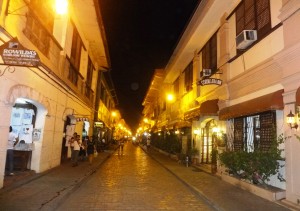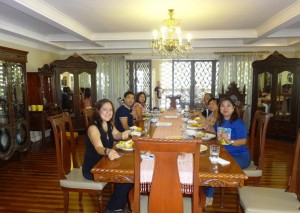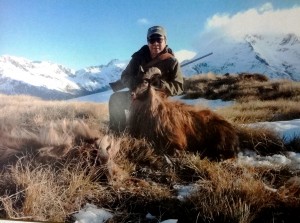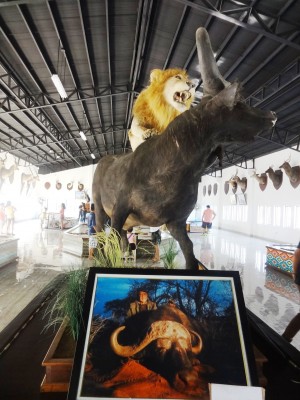For balikbayans this X’mas break—a Vigan visit

VIGAN BY NIGHT: Voted as 2014 New7Wonder City:. Stroll down the turn of 16th century buildings, along side with horse-drawn carriages, popularly known as “karitela.” PHOTOS BY CAROL TANJUTCO
Vigan notably has emerged as the most progressive city in the north, while preserving its 16th century charm for the whole world to see. The famous city is listed as UNESCO World Heritage site in 1999, and voted the 2014 New7Wonder City. It has many historical and cultural offerings, not excluding an odd private museum located at Baluarte, which houses preserved examples of endangered animals from all over the world.
Driving to northern Philippines via NLEX/TPLEX freeway is a breeze, a morning brush with “bukang liwayway” or break of dawn, when the sun peeks through the night, and the crescent moon vanishes. Amazingly, what used to be a nine-hour trip to Vigan has been cut down to seven hours leisurely trip, with stops at landmark churches.

Catching up with the down-to-earth Mayor Eva Marie Singson-Medina, casually attired in her Vigan City T-shirt. A favorite delicacy in the city is called dinardaraan, Ilocano version of dinuguan (pork blood stew) served with chicharon (pork rind).
Unfamiliar with the area, we started our day in Vigan with a visit to the home of Mayor Eva Marie Singson Medina, who so graciously served lunch for a few visitors who arrived that day. It was an opportunity to savor popular dishes consisting of her favorite small fish called Ipon, pinakbet vegetables with the famous bagnet, pipian chicken dish and kanatilyo for dessert (kundol candy). The mayor’s antique dining and living rooms are filled with symbols of Spanish opulence reminiscent of the ilustrados, seemingly frozen with time along with the city’s heritage.
We visited the city’s thriving small businesses consisting of weavers who are supported by the city’s cooperative financial program. Abel weaving is one of the few surviving traditional crafts in Vigan. Historically, the demand for the famous handwoven abel iloco nearly killed the Spanish weaving industry during the galleon trade era. At least four barangays in the city still have abel weavers, the best known of which is Barangay Camangaan as it produces much of the local abel products available in Vigan’s souvenir shops and the public market. The other three barangay with abel weavers are Cabaroan Daya, Mindoro and San Pedro.
Abel weaving follows a very intricate process, from preparing and dyeing the yarn to arranging different colors of yarn to produce the desired design and operating the wooden handloom with the synchronized movement of both hands and feet.

Trophy hunter, Gov. Chavit Singson poses with each hunted animal. The images are displayed side by side with the preserved torso of the animals showing their elaborate antlers.
Excluding the yarn preparation and arrangement weavers, on average, produce 18-36 meters of runners per day, 3-6 dozens of ikat and Lepanto placemats and 35-50 hand towels. Blanket and pillow case weavers produce 182 meters of fabric in three weeks straight, or an average of about 8-10 meters per day.
Taking home one of these pieces at a cost of a few bucks is priceless, a reminder of the hard work of indigenous people who have kept the tradition alive through the centuries.
A fascinating highlight of our visit was a step into the private vacation home of former Governor Chavit Singson, where a couple of live tigers were playing like big cats in a cage. Some wild animals freely walked around, like a deer by a pond. Verily, he built this place to be his sanctuary, aptly called Baluarte.
His summer home is a modern tower wrapped with reflective glass that sits prominently in a secluded area. Inside the house, supporting posts are laminated with mother of pearl shells that shimmer with natural light. An elevator ride to his rooftop bar offered an exhilarating 360-deree view of the province and the South China Sea. The governor kept a collection of bronze statues and some World War II artillery pieces.
Unexpectedly, we were shown a private museum, which houses a huge collection of extinct animals from all over the world, a museum that was not popularly known to exist in the country. Former Governor Chavit Singson brought home these rare species from several “trophy hunting” trips abroad.

The hunter houses his trophies in a private museum accessible to the public, part of the Baluarte wildlife sanctuary and preservation.
Visitors are treated to a very different safari experience. Each animal was preserved from the torso up to their antlers, displaying an elaborate pattern of horns. Side by side, a photograph of the governor is proudly placed bearing the prize catch.
The entrance to the museum will awe visitors upon seeing the imposing full bodies of a wild elephant and the king of the jungle, a lion, most sought after trophy. We were told that another elephant would be arriving soon as part of the wild animal exhibit.
The images of each animal shot in captivity are displayed for spectators to experience the feeling of euphoria that every hunter craves for after a wild catch. Others may be in shock while standing as a silent witness to the slaughter of giant beasts.
This is a stark contrast to maintaining and caring for a wildlife sanctuary funded by no less than the governor himself at the neighboring zoo. Whichever side of Baluarte you want to see, these special tours may be requested through the City of Vigan.
Like us on Facebook